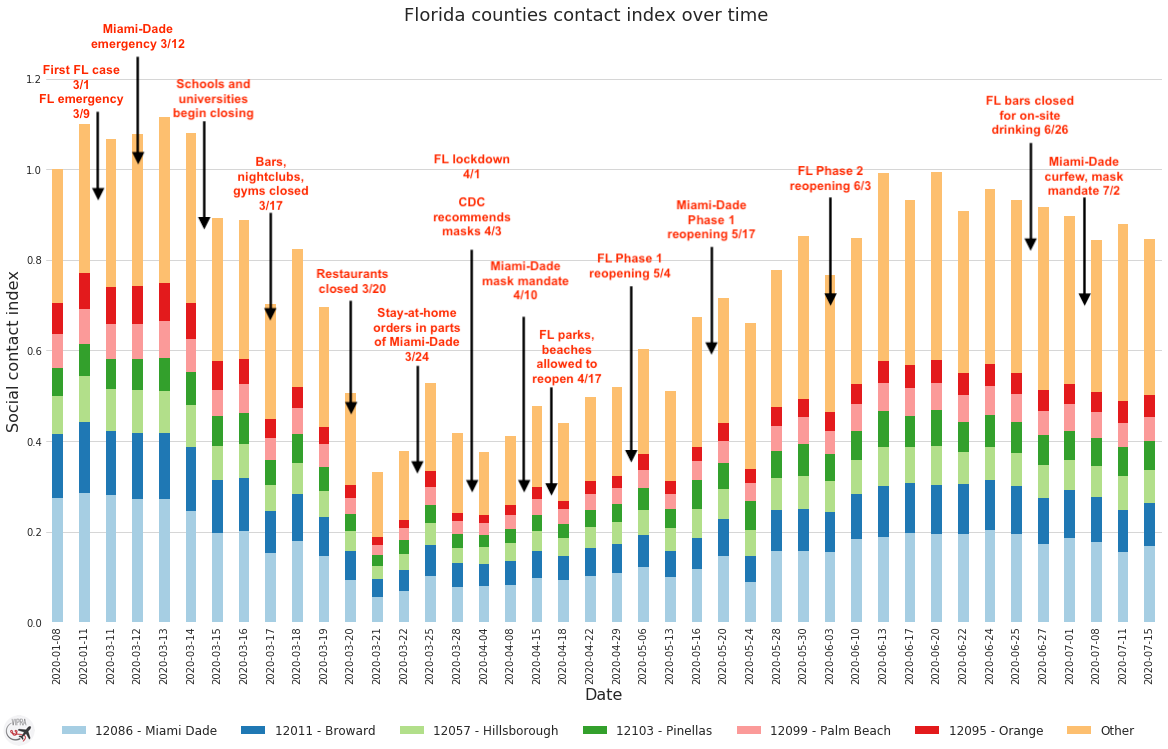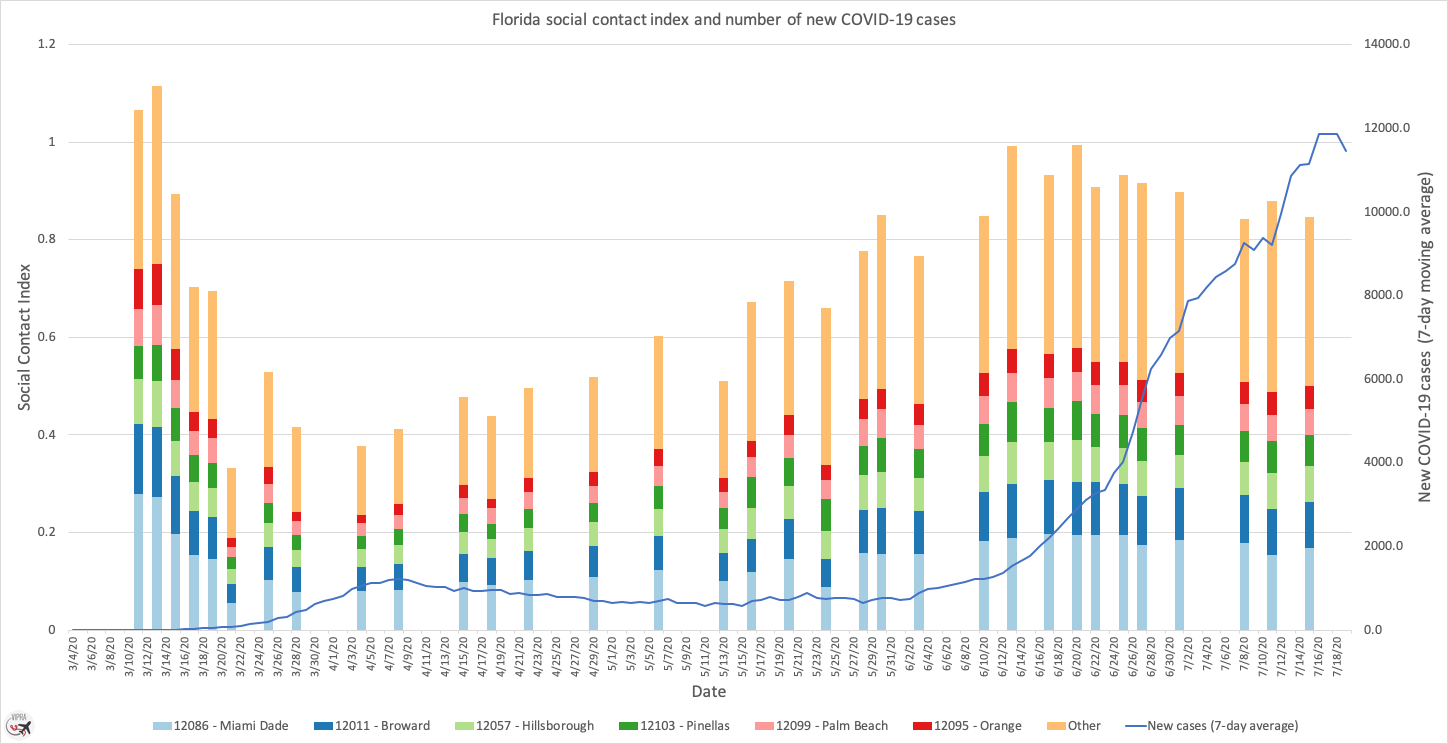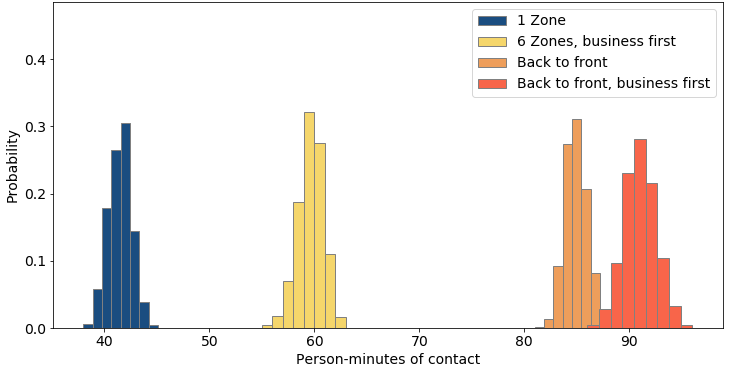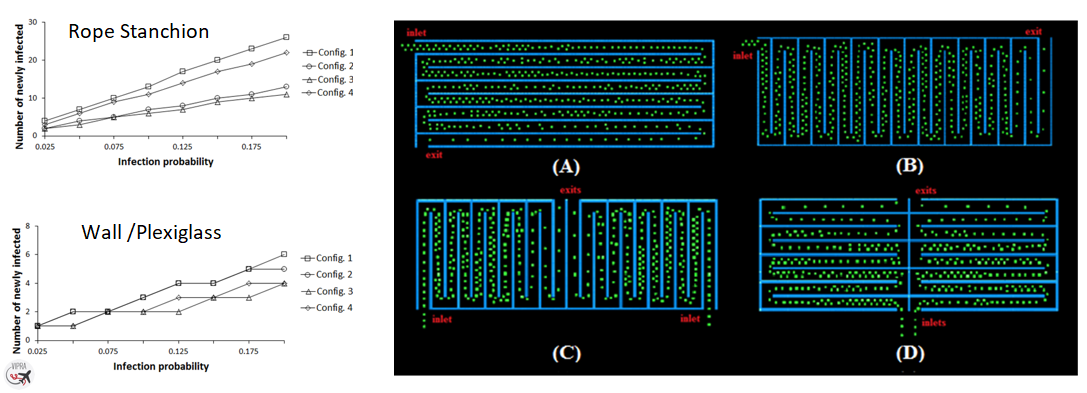COVID-19
COVID-19 Health Tips
Note: These tips are based on recent scientific studies that may not yet be peer-reviewed and are subject to corrections. For advice based on established science, please talk to your favorite public health official.
See our COVID-19 Health Tips page for more details.
- How you can make your air travel safer
- Board toward the end of the boarding process to reduce exposure in the airplane.
- Economy class leads to greater social distancing than business class, especially if you are in the window seat, if the airline keeps the middle seat empty and you wear a mask. Otherwise, the business class may be safer.
- Focus on exposure outside the airplane too; the air in the airport may not be as clean as that in the airplane.
- How you can be safer in crowds (if you can’t avoid them)
- People have contacted COVID-19 well beyond the 6-feet limit advocated by public health agencies. The type of activity of an infective person, ventilation system, exposure time, and the number of viruses shed by an infective person, all impact the safe threshold.
- Wear a good mask and wear it right. In particular, please see our discussion on the N95 mask.
- Suggestions for airlines
- Don’t use back-to-front boarding. A random boarding process reduces exposure by a factor of two.
- Keep the middle seats empty if it is economically viable. This reduces the exposure per person by more than a factor of two.
- Suggestions for operations personnel of crowded locations
- Using solid partitions in winding queues, enforcing a single file, and selecting a suitable queue configuration can reduce exposure by around 75%.
Latest Results
- Very preliminary results show relationships between social contacts in Florida, government policy, and COVID-19 cases.
- DOI: Swaminathan, B., & Srinivasan, A. (2020, July 17). Social Contact Index.
- Human response to COVID-19 and events may play a more prominent role in impacting social contacts than government policy.
- Normal levels of social contacts appear to lead to a substantial spread of COVID-19.
- It may be possible to increase social contacts beyond the minimal level early in April while limiting COVID-19 spread.
- Social contacts are computed from Location Based Services (LBS) data. De-identified, privacy-enhanced data is provided by Cuebiq, which collects first party data anonymously from opted-in users who have provided informed consent through a GDPR and CCPA compliant framework.

Impact of government policies on social contacts in Florida.

Relationship of social contacts to COVID-19 case trends in Florida.
- Preliminary results under review show that some airline boarding changes in response to COVID-19 increase infection risk.
- Suitable queueing strategies can reduce infection risk by arounds 75%.

Social contacts with middle seats occupied on an Airbus 320. Back-to-front boarding policies, introduced in response to COVID-19, increase exposure.

Impact of queueing strategies on infection risk.
Grants
- NSF RAPID grant on Leveraging New Data Sources to Analyze the Risk of COVID-19 in Crowded Locations. In collaboration with the CAM2 team at Purdue.
- NSF CSSI grant on Cyberinfrastructure for Pedestrian Dynamics-Based Analysis of Infection Propagation Through Air Travel.
- Supercomputing time on NERSC Cori, Argonne Theta, and TACC Frontera.
Any opinions, findings, and conclusions or recommendations expressed in this material are those of the authors and do not necessarily reflect the views of the National Science Foundation or other funding sources.
VIPRA in the News
- VIPRA research, including recent COVID-19 results, has been covered in various international news outlets, including Fox News, Economist, India Today, Deutsche Welle, etc.
- Please see the Press Coverage page for more details.
COVID-19 Research Focuses
- Identify solutions that increase social distancing with minimum disruption to human activities in crowded locations.
- Current policies tend to limit human activities in normally crowded places in order to increase social distancing. Our work examines crowd management plans in built environments, such as queuing strategies and layouts of high-density common areas, which can lead to adequate social distancing with limited disruption to activities. This is accomplished by linking pedestrian dynamics model with data from networked camera and location based services from cell phone apps to accurately model human movement at fine scales.
- Understand the risk of COVID-19 in rural America and identify potentially impactful policies.
- Much of COVID-19 work has focussed on big cities. We study rural counties in Florida to understand the social distancing response of residents to events and public health policies. The insight obtained from this study can help evaluate the risk of COVID-19 spread and suggest effective strategies to reduce the risk. We use location based services and other social media data to examine mobility and sentiments in these areas.
- Understand the cause of demographic differences in COVID-19 risk.
- Underserved populations have been severely impacted during the COVID-19 pandemic. We examine the drivers of social-contact based risks amongst these vulnerable groups. Our results will identify policies, such as schedule adjustment to public transportation, that can ameliorate the risk.
